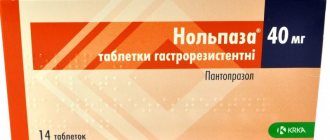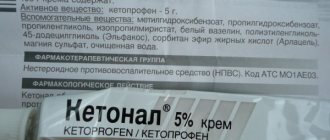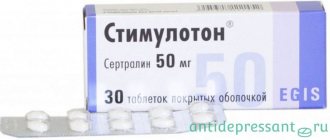Avastin is an innovative antitumor drug that has recently appeared in the pharmacy assortment. The drug is in demand in oncology practice due to its ability to fight the most aggressive forms of cancer. Avastin contains recombinant humanized antibodies that are not toxic to the human body. But during treatment there is a possibility of developing adverse reactions. Therefore, it is advisable to use the drug only as prescribed by a doctor in the dosage regimen specified by him.
Pharmacological properties of the drug Avastin
Pharmacodynamics. Avastin (bevacizumab) is a recombinant hyperchimeric (humanized, close to human) monoclonal antibody that selectively binds to and neutralizes biologically active vascular endothelial growth factor (VEGF). Avastin inhibits the binding of vascular endothelial growth factor to its receptors on the surface of endothelial cells, which leads to decreased vascularization and inhibition of tumor growth. Bevacizumab contains fully human frameworks with mouse hyperchimeric antibody complementary defining regions that bind to VEGF. Bevacizumab is produced using recombinant DNA technology in an expression system represented by Chinese hamster ovary cells. Bevacizumab consists of 214 amino acids and its molecular weight is approximately 149,000 Da. Bevacizumab administration inhibits metastatic disease progression and reduces microvascular permeability in a variety of human tumors, including colon, breast, pancreas, and prostate cancer. Clinical efficacy In metastatic colorectal cancer, Avastin in combination with irinotecan, fluorouracil and calcium folinate (Leucovorin) (IF) as first line therapy in patients with metastatic colorectal cancer significantly increases survival from 15.6 to 20.3 months (p = 0.00004 ) in all subgroups of patients, regardless of age, gender, general condition, location of the primary tumor, number of affected organs and duration of metastatic disease. The addition of Avastin to IPF chemotherapy increased progression-free survival from 6.2 to 10.6 months (p≤0.00001), overall response rate from 34.8 to 44.8% (p=0.0036) and median duration of response to treatment from 7.1 to 10.4 months. A lower risk of mortality was observed in the group of patients who used Avastin in combination with IFL compared to the group who used IFL chemotherapy alone. When using Avastin (5 mg/kg body weight every 2 weeks) in combination with fluorouracil/calcium folinate as first-line therapy in patients with metastatic colorectal cancer and the presence of contraindications to irinotecan therapy, a higher objective response to treatment was observed - 40% compared with 15.2–16.7% without the addition of Avastin, a significant increase in progression-free survival (from 5.2 to 9.2 months) and a trend towards increased survival (from 13.6 to 17.7 months) compared with prescription only chemotherapy with fluorouracil/calcium folinate. When prescribing Avastin (7.5 mg/kg every 3 weeks) in combination with oral capecitabine and IV oxaliplatin (XELOX) or when prescribing Avastin (5 mg/kg every 2 weeks) in combination with leucovorin and fluorouracil bolus and then fluorouracil infusion, and oxaliplatin intravenously (FOLFOX-4), there is a statistically significant increase in progression-free survival compared with chemotherapy alone. When prescribing Avastin (10 mg/kg every 2 weeks) in combination with leucovorin and fluorouracil bolus, followed by fluorouracil infusion and IV oxaliplatin (FOLFOX-4) to patients who have previously received treatment (second line therapy) for advanced colorectal cancer, there was a statistically significant increase in overall survival, progression-free survival and a higher objective response rate compared with chemotherapy alone. For metastatic breast cancer, Avastin (10 mg/kg every 2 weeks) in combination with paclitaxel as first-line therapy in patients with metastatic breast cancer statistically significantly increases progression-free survival and objective response rates compared with chemotherapy alone . Avastin (7.5 mg/kg every 3 weeks) in combination with docetaxel as first-line therapy in patients with HER2-negative metastatic breast cancer who have not previously received chemotherapy statistically significantly increases progression-free survival and the rate of objective diagnosis. response compared to chemotherapy alone. Avastin (15 mg/kg every 3 weeks) in combination with docetaxel as first-line therapy in patients with HER2-negative metastatic breast cancer who have not previously received chemotherapy statistically significantly increases progression-free survival and objective response rates compared with chemotherapy alone. The average progression-free survival with docetaxel + placebo was 8 months, with docetaxel + Avastin 7.5 mg - 8.7 months, with docetaxel + Avastin 15 mg - 8.8 months. Objective response was obtained in 44.4% of patients who received docetaxel + placebo, in 55.2% of patients who received docetaxel + Avastin 7.5 mg, and in 63.1% of patients who received docetaxel + Avastin 15 mg. Inoperable advanced metastatic or recurrent non-squamous non-small cell lung cancer Avastin (15 mg/kg every 3 weeks) in combination with platinum-based chemotherapy (carboplatin and IV paclitaxel) as first-line treatment for patients with non-squamous non-small cell lung cancer statistically significantly improves overall survival, progression-free survival and objective response rates compared with chemotherapy alone. Avastin (7.5 mg/kg or 15 mg/kg every 3 weeks) in combination with platinum-based chemotherapy (cisplatin and IV gemcitabine) as first-line treatment for patients with non-squamous non-small cell lung cancer statistically significantly increases the survival time without disease progression and objective response rates compared with chemotherapy alone. Advanced and/or metastatic renal cell carcinoma Avastin (10 mg/kg every 2 weeks) in combination with interferon alfa-2a (9 million MO 3 times a week) as first-line treatment for patients with advanced and/or metastatic renal cell carcinoma cancer statistically significantly increases the survival period without progression of the disease and the rate of obtaining an objective response compared to the appointment of interferon alfa-2a alone. For malignant glioma (WHO stage IV) - glioblastoma Patients with the first or second relapse of glioblastoma after preliminary treatment with radiation therapy (which was completed at least 8 weeks before treatment with Avastin) and temozolomide were treated with Avastin (10 mg/kg once every 2 weeks by IV infusion) or treatment with Avastin and irinotecan (125 mg/m2 IV or 340 mg/m2 IV for patients receiving enzyme-induced antiepileptic drugs) until signs of disease progression/death or signs of intolerable toxicity. The primary endpoint of the study was 6-month progression-free survival and objective response rate. Other efficacy parameters included duration of progression-free survival, duration of response, and overall survival. 6-month progression-free survival when using Avastin and Avastin in combination with irinotecon was 42.6% and 50.3%, respectively (number of patients in the study - 85 and 82); objective response rate - 28.2 and 37.8%; progression-free survival - 4.2 and 5.6 months; duration of objective response - 5.6 and 4.3 months; overall survival (average) - 9.3 and 8.8 months. The pharmacokinetics of Avastin have been studied at different doses (0.1-10 mg/kg every week; 3-20 mg/kg every 2 or 3 weeks; 5 mg/kg every 2 weeks or 15 mg/kg every 3 weeks) in patients with different solid tumors. In all clinical studies, bevacizumab was administered as an intravenous infusion. The pharmacokinetics of bevacizumab, like other antibodies, is described by a two-compartment model. Distribution of Avastin is characterized by low clearance, low volume of distribution (Vc) and a long half-life, thereby maintaining the required drug concentration when administered once every 2-3 weeks. The clearance of bevacizumab does not depend on the patient's age. Low albumin levels and high ALP levels indicate disease severity and tumor burden. Bevacizumab clearance was approximately 20% higher in subjects with low plasma albumin levels and in subjects with elevated ALP levels when compared with subjects with intermediate albumin and/or alkaline phosphatase levels. Distribution The volume of distribution (Vc) is 2.66 and 3.25 L in women and men, respectively, which corresponds to the volume of distribution of IgG and other monoclonal antibodies. After dose adjustment for body weight, the volume of distribution is 22% greater in men than in women. Metabolism Following a single IV dose of 125I-bevacizumab, its metabolic characteristics are similar to those of the naturally occurring IgG molecule, which does not bind to VEGF. Elimination The pharmacokinetics of bevacizumab in the dose range of 1.5–10 mg/kg/week is linear. The clearance of bevacizumab is 0.207 L/day in women and 0.262 L/day in men. After dose adjustment for body weight, bevacizumab clearance was 26% higher in men than in women. There is no correlation between bevacizumab clearance and patient age. In patients with low albumin (≤29 g/dL) and high ALP levels (≥484 U/L) (both markers of disease severity), bevacizumab clearance is approximately 20% higher than in patients with average laboratory values. According to the two-compartment model, the initial half-life (α) is 1.4 days in men and women, and the terminal half-life (β) is 20 days in women and 19 days in men. Pharmacokinetics in special groups of patients Elderly patients (over 65 years of age) There is no significant dependence of the pharmacokinetics of bevacizumab on age. Children There are limited data on the pharmacokinetics of bevacizumab in children, which indicate no difference between the volume of distribution and clearance of bevacizumab in children and adults with solid tumors. Patients with renal insufficiency The safety and effectiveness of bevacizumab in patients with renal insufficiency have not been studied. Patients with hepatic impairment The safety and effectiveness of bevacizumab in patients with hepatic impairment have not been studied.
Characteristics of Avastin
Avastin is a product of genetic engineering. Its composition is formed from nucleic acids, which were obtained by combining foreign fragments with nucleotides. This combination is considered in medicine and pharmacology to have properties as close as possible to the cells of the human body. Monoclonal antibodies selectively combine with the bioactive factor VEGF, which leads to its rapid neutralization. The malignant tumor gradually decreases in size and then disappears altogether.
Avastin is available in the form of a fine crystalline powder. This is a concentrate that is diluted with an isotonic sodium chloride solution before use. The powder is packaged in glass bottles with rubber stoppers and aluminum caps of 4 or 16 ml. The cardboard box also contains an annotation, the recommendations of which will help to carry out the treatment correctly.
Indications for use of Avastin
Metastatic colorectal cancer: in combination with chemotherapy based on fluoropyrimidine derivatives. Metastatic breast cancer: as first-line treatment for recurrent or metastatic breast cancer in combinations based on taxane derivatives. Advanced unresectable, metastatic or recurrent non-squamous non-small cell lung cancer: as first-line treatment in combination with platinum-based chemotherapy. Advanced and/or metastasizing renal cell carcinoma: as first line of therapy in combination with interferon alfa-2a. Malignant glioma (WHO stage IV) - glioblastoma: as monotherapy or combination treatment with irinotecan after relapse.
pharmachologic effect
Avastin is an anti-tumor drug that slows down the formation of new vessels that supply nutrients and oxygen to the tumor tissues, and thereby allows the malignant tumor to be transferred from an aggressive stage to a chronic one. Avastin (reviews from patients and doctors confirm this) has a suppressive effect on metastases of various malignant neoplasms.
It is typical for this product to spread throughout the tissues in a minimal amount; in addition, it is excreted from the body for quite a long time, which allows you to maintain the required amount of the main component of the drug, administering it strictly according to the instructions - once every 14-20 days. The drug is excreted not through the liver or kidneys, but through all cells of the body for 18 days in men, and 20 in women.
But is Avastin really that good? Reviews from patients say that this is a very effective drug when combined with chemotherapy for various types of cancer. This drug significantly increases the survival period in all groups of patients, while disease progression does not occur.
Using Avastin
Avastin is administered only intravenously; You cannot administer the drug intravenously! Metastatic colorectal cancer Standard dosage regimen As a first line of therapy: 5 mg/kg once every 2 weeks or 7.5 mg/kg once every 3 weeks as a long-term intravenous infusion. As a second line of therapy: 10 mg/kg once every 2 weeks or 15 mg/kg once every 3 weeks as an intravenous infusion for a long time. If signs of disease progression appear, Avastin therapy should be discontinued. Metastatic breast cancer 10 mg/kg, 1 time every 14 days or 15 mg/kg, 1 time every 21st day as a long-term intravenous infusion. Clinical efficacy in patients with metastatic breast cancer has also been demonstrated when using Avastin at a dose of 7.5 mg/kg, 1 time every 21 days as an intravenous infusion. If signs of disease progression appear, Avastin therapy should be discontinued. Advanced inoperable metastatic or recurrent non-squamous non-small cell lung cancer Chemotherapy in combination with platinum-based drugs for up to 6 courses, followed by Avastin as monotherapy until signs of disease progression appear. If signs of disease progression occur, Avastin therapy should be discontinued. Recommended doses: 7.5 mg/kg once every 3 weeks as an intravenous infusion in addition to cisplatin-based chemotherapy; 15 mg/kg once every 3 weeks as an intravenous infusion in addition to carboplatin-based chemotherapy. Advanced and/or metastatic renal cell carcinoma 10 mg/kg once every 2 weeks as a long-term intravenous infusion. Avastin therapy should be discontinued if signs of disease progression appear. Malignant glioma (stage IV according to WHO) - glioblastoma 10 mg/kg once every 2 weeks or 15 mg/kg once every 3 weeks as an intravenous infusion. Treatment with Avastin is recommended to be continued until the disease progresses. General recommendations for the use of the drug. The preparation of Avastin solution should be carried out under aseptic conditions. The required amount of Avastin is diluted to a total volume of 100 ml with sterile pyrogen-free 0.9% sodium chloride solution in compliance with the rules of asepsis (in patients with larger body weight who receive Avastin at a dose of 10 or 15 mg/kg, the required amount of the drug is diluted to the total volume of 200 or 250 ml of sterile pyrogen-free 0.9% sodium chloride solution). The initial dose of the drug is administered over 90 minutes as an intravenous infusion after chemotherapy, subsequent doses can be administered before or after chemotherapy. If the first infusion is well tolerated, then the second administration can be carried out over 60 minutes. If the infusion over 60 minutes is well tolerated, then all subsequent administrations can be carried out over 30 minutes. It is not recommended to reduce the dose of bevacizumab due to side effects. If necessary, treatment with Avastin should be stopped completely or temporarily. Dosage regimen in special patient groups The safety and effectiveness of bevacizumab in children and adolescents, as well as in patients with renal or hepatic impairment, have not been studied. In elderly patients, no dose adjustment of Avastin is required. Recommendations for the use and disposal of unused solution Before use, the solution must be inspected for mechanical inclusions and color changes. Avastin does not contain an antimicrobial preservative, so it is necessary to ensure the sterility of the prepared solution and use it immediately. If the drug is not used immediately, then medical personnel are responsible for the time and storage conditions of the prepared solution. The prepared solution can be stored for no more than 24 hours at a temperature of 2–8 °C if the dilution is carried out under controlled and validated aseptic conditions. The chemical and physical stability of the prepared solution is maintained for 48 hours at a temperature of 2–30 °C in a 0.9% sodium chloride solution. Any unused solution remaining in the bottle is destroyed because it does not contain preservatives.
Contraindications
According to the instructions, Avastin should not be taken if:
- Hypersensitivity to the active or auxiliary components of the drug;
- Hypersensitivity to drugs based on Chinese hamster ovary cells and other recombinant human antibodies;
- Pregnancy and breastfeeding;
- Damage to metastases of the central nervous system;
- Liver or kidney failure.
Avastin is not prescribed in childhood due to the lack of clinical trials for this age category.
Side effects of Avastin
Very rarely, the following serious adverse reactions were observed: gastrointestinal perforation, hemorrhage, including pulmonary hemorrhage/hemoptysis (more often in patients with non-small cell non-squamous cell lung cancer), arterial thromboembolism. The increase in blood pressure and the development of proteinuria is likely to be dose-dependent. In patients who received Avastin, hypertension (arterial hypertension), asthenia, diarrhea and abdominal pain are most often detected. The following are side effects of any severity observed in patients receiving Avastin or combination treatment with chemotherapy. From the cardiovascular system : hypertension (arterial hypertension), arterial thromboembolism (including myocardial infarction, stroke, transient ischemic attacks and other arterial embolisms); deep vein thrombosis, chronic heart failure, supraventricular tachycardia, bleeding. From the hematopoietic system : leukopenia, neutropenia, anemia, thrombocytopenia. From the gastrointestinal tract: abdominal pain, diarrhea, constipation, rectal bleeding, stomatitis, bleeding gums, gastrointestinal perforation, intestinal obstruction. From the respiratory system : nosebleeds, shortness of breath, rhinitis, hypoxia, pulmonary thromboembolism. . Skin: palmoplantar erythrodysthesia syndrome, dry skin, exfoliative dermatitis, skin discoloration. From the central nervous system : taste distortion, anorexia, syncope, headache, stroke, drowsiness, peripheral sensory neuropathy. From the organ of vision: visual impairment . Local reactions: pain at the injection site. Others : asthenia, abscess, sepsis, fever, vaginal bleeding, urinary tract infections, fatigue, pain of various localizations, dehydration, anorexia. Laboratory Abnormalities Grade 3 and 4 laboratory abnormalities observed in patients receiving Avastin with or without chemotherapy included proteinuria, hypokalemia, hyperkalemia, hyponatremia, hypophosphatemia, hyperglycemia, neutropenia, thrombocytopenia, increased prothrombin time, increased international normalized ratio . Side effects registered during the post-registration period Very rare: perforation of the nasal septum; hypertensive encephalopathy with fatal outcome. Rarely: reversible late leukoencephalopathy syndrome, including epileptic seizures, headache, mental disorders, visual impairment, damage to the visual center, measles, hypertension. Common: dysphonia.
Avastin in ophthalmology
More recently, information appeared in the press that the drug Avastin is used by ophthalmologists to treat eye diseases and gives very good results. But is it? What does the manufacturer say about this? Is it possible that this remedy can not only stop the growth of a tumor, but also cure diseases of the organs of vision?
Yes, in fact, there is information that some patients, having heard about the benefits of the drug for the eyes, decided to inject Avastin into the vitreous body, but the results were disastrous. The drug did not bring them any cure; on the contrary, it led to the fact that people simply went blind. has repeatedly emphasized that Avastin cannot be used in ophthalmology, its purpose is different.
The drug is designed to reduce the intensity of the growth of blood vessels that feed the malignant neoplasm, thereby reducing the intensity of tumor development. That is why, before starting therapy and listening to unsubstantiated recommendations, it is better to consult a doctor.
Special instructions for the use of Avastin
Treatment with Avastin can only be carried out under the supervision of a physician experienced in antitumor therapy. Gastrointestinal perforation Patients with metastatic colorectal cancer treated with Avastin in combination with chemotherapy have an increased risk of developing gastrointestinal perforation. In clinical studies, GI perforations were detected in ≤1% of patients with metastatic breast cancer or nonsquamous non-small cell lung cancer and in 2% of patients with metastatic colorectal cancer or metastatic kidney cancer. Cases of gastrointestinal perforations have also been identified in patients with recurrent glioblastoma. Severe cases of gastrointestinal perforation with peritonitis, including death, have been reported. The clinical presentation of gastrointestinal perforation varied in severity and ranged from signs of free gas on abdominal x-ray to perforation with an abdominal abscess with a fatal outcome. Although the cause-and-effect relationship of peritonitis resulting from gastric ulcers, tumor necrosis, diverticulitis or colitis with the use of Avastin has not been established, caution should be exercised when treating patients with signs of periinflammatory processes in the abdominal cavity with bevacizumab. If gastrointestinal perforation develops, treatment with Avastin should be discontinued. Wound healing Avastin may negatively affect wound healing. Treatment with bevacizumab should not be started until 28 days after surgery or until the surgical wound has completely healed. If complications associated with wound healing occur during treatment, Avastin should be temporarily discontinued until complete healing. Avastin should also be temporarily stopped if surgery is required. In a study of patients with recurrent glioblastoma, the incidence of postoperative wound healing complications (craniotomy site dehiscence and CSF leak) was 3.6% in patients who received Avastin and 1.3% in patients who received Avastin in combination with irinotecan. In studies of metastatic breast cancer, grade 3 to 5 wound healing complications were reported in 1.1% of patients who received Avastin compared with 0.9% of control patients. Arterial hypertension An increased incidence of hypertension (arterial hypertension) was noted in patients treated with Avastin. Clinical safety data suggest that the incidence of hypertension (arterial hypertension) is independent of the dose of bevacizumab. There is no information on the effect of Avastin at the beginning of treatment in patients with uncontrolled hypertension (arterial hypertension). When prescribing Avastin to these individuals, caution should be exercised and blood pressure levels should be constantly monitored. In patients with hypertension (arterial hypertension) requiring drug therapy, it is recommended to temporarily discontinue treatment with Avastin until adequate blood pressure control is achieved. Normalization of blood pressure is achieved by using ACE inhibitors, diuretics, and calcium channel blockers. If it is impossible to establish drug control of blood pressure and/or if a hypertensive crisis or hypertensive encephalopathy develops, Avastin should be discontinued. The risk of developing proteinuria is increased in patients with a history of hypertension (arterial hypertension). It is possible that grade I proteinuria depends on the dose of Avastin. Urinalysis is recommended to screen for proteinuria before and during Avastin therapy. If grade IV proteinuria (nephrotic syndrome) develops, Avastin should be discontinued. Tumor-Associated Bleeding Patients with metastatic colorectal cancer have an increased risk of tumor-related bleeding. If grade III or IV bleeding occurs during treatment, Avastin should be discontinued. In patients with congenital bleeding diathesis, acquired coagulopathy, or taking full-dose anticoagulants for thromboembolism, caution should be exercised before prescribing Avastin. In patients who used Avastin with warfarin due to the occurrence of venous thrombosis, there was no increase in the incidence of grade III or IV bleeding. Patients with non-small cell lung cancer treated with Avastin are at risk of severe bleeding with the possibility of fatal pulmonary hemorrhage. Patients with a history of bleeding/hemoptysis (more than 2.5 ml of blood) should not be prescribed Avastin. Taking antirheumatic/anti-inflammatory drugs, anticoagulants, prior radiation therapy, atherosclerosis, central location of the tumor, cavity formation before or during treatment are risk factors for pulmonary hemorrhage, while a statistically significant relationship between these symptoms has been proven only in squamous cell lung cancer. Bleeding was also rarely observed in other types of tumors (hepatoma with metastatic damage to the central nervous system, hip sarcoma with necrosis). Patients with colorectal cancer may experience tumor-related GI bleeding, including rectal bleeding and melena. Rarely, tumor-associated bleeding was detected in other tumors and locations, and included cases of CNS bleeding in patients with CNS metastases and glioblastoma. Intracranial bleeding may occur in patients with recurrent glioblastoma. Patients who were not treated for CNS metastases were not included in clinical trials of Avastin based on the results of imaging studies as well as symptoms of CNS metastases. Therefore, the risk of CNS bleeding in these patients has not been studied prospectively in randomized clinical trials. Monitoring patients for symptoms of CNS bleeding is recommended. If intracranial bleeding occurs, treatment with Avastin should be discontinued. Bleeding of the mucous membranes and skin was noted in 20–40% of patients. More often, nosebleeds were detected, not exceeding grade I, lasting ≤5 minutes. Nosebleeds stopped without medical intervention and did not require a change in Avastin treatment regimen. Bleeding gums and vaginal bleeding occurred less frequently. Arterial thromboembolism A history of arterial thromboembolism or age over 65 years is associated with an increased risk of arterial thromboembolism during treatment with Avastin. Caution must be exercised when treating such patients. If arterial thromboembolism occurs, Avastin therapy should be discontinued. When bevacizumab was administered in combination with chemotherapy, the incidence of arterial thromboembolism (including stroke, transient ischemic attack, myocardial infarction) was higher than when chemotherapy was used alone. Venous thromboembolism During treatment with Avastin, there is a high risk of developing venous thromboembolism (pulmonary embolism, deep vein thrombosis, thrombophlebitis). Treatment with Avastin should be discontinued if pulmonary thromboembolism is suspected. Reversible leukoencephalopathy syndrome In patients treated with Avastin, isolated cases of reversible posterior leukoencephalopathy syndrome (RPLS) have been identified. The occurrence of the syndrome may be indicated by convulsions, headache, mental disorders, visual impairment, cortical blindness, hypertension (arterial hypertension). The diagnosis of RPLS can be confirmed using brain MRI imaging techniques. If RPLS develops, it is necessary to control blood pressure and discontinue Avastin therapy. The safety of repeated courses of Avastin therapy in patients with a history of RPLS is not known. Congestive Heart Failure Most cases of congestive heart failure occurred in patients with metastatic breast cancer who had received a history of anthracyclines and/or radiation therapy to the chest, as well as other risk factors for congestive heart failure, such as coronary artery disease or concomitant cardiotoxicity. therapy. Both asymptomatic decreases in left ventricular ejection fraction and congestive heart failure, which required appropriate therapy or hospitalization, were noted. Avastin should be used with caution in patients with clinically significant cardiovascular disease or a history of congestive heart failure. Fistulas Cases of fistula formation, including death, have been reported during Avastin therapy. Gastrointestinal fistulas most often occurred in patients with metastatic colorectal cancer, less often in other tumor locations. Cases of fistula formation in other locations (bronchopleural, urogenital, biliary) have rarely been recorded. The formation of fistulas was more often detected in the first 6 months of Avastin therapy, but they can occur both after 1 week and 1 year or later after the start of treatment. It is necessary to discontinue treatment with Avastin if a tracheoesophageal fistula or a fistula of another location of IV severity occurs. If an internal fistula appears that does not penetrate the gastrointestinal tract, the issue of discontinuing Avastin is decided individually. When treated with Avastin in combination with myelotoxic doses of chemotherapy, an increased incidence of severe neutropenia, febrile neutropenia, or infections with severe neutropenia (including fatal cases) was observed. When prescribing Avastin to patients over 65 years of age, there is an increased risk of arterial thromboembolism (including stroke, transient ischemic attack, myocardial infarction), grade III–IV leukopenia and thrombocytopenia, as well as neutropenia (all degrees of severity), diarrhea, nausea, headache and asthenia. There was no increase in the incidence of other adverse reactions associated with the use of Avastin in elderly patients. Men and women of childbearing potential must use effective contraception during treatment with Avastin and for at least 6 months after treatment. Breastfeeding is not recommended for at least 6 months after finishing Avastin therapy. Use during pregnancy or breastfeeding There have been no controlled studies of the use of Avastin in pregnant women. IgG is known to cross the placental barrier and Avastin may inhibit fetal angiogenesis. Therefore, Avastin should not be used during pregnancy. In women of childbearing potential, appropriate contraception is recommended during treatment with Avastin. Given the characteristics of pharmacokinetics, contraception is recommended for use for at least 6 months after receiving the last dose of Avastin. Breastfeeding It is not known whether bevacizumab is excreted in breast milk. Because maternal IgG is excreted in breast milk and Avastin may interfere with the growth and development of the newborn, it is recommended that breastfeeding be discontinued during Avastin therapy and for at least 6 months after the last dose of Avastin.
Use during pregnancy and lactation
Pregnancy and lactation are a contraindication to the use of Avastin. Men and women of reproductive age are strongly recommended to use reliable methods of contraception during drug therapy and for at least 6 months after the end of treatment.
Avastin may cause fertility problems in women. In most patients, reproductive function is restored after discontinuation of the drug. The long-term consequences of treatment with the drug in terms of its effect on fertility remain unknown. During drug therapy and for at least 6 months after its completion, breastfeeding should be avoided.
Avastin drug interactions
The effect of anticancer drugs on the pharmacokinetics of Avastin. No clinically significant effect on the distribution of Avastin has been reported when used concomitantly with chemotherapy. Avastin clearance did not differ between patients who received Avastin alone and those who received Avastin in combination with IPF (bolus regimen). The effect of other chemotherapeutic drugs (fluorouracil-LV, carboplatin-paclitaxel, capecitabine or doxorubicin) on the clearance of Avastin is not considered clinically significant. Effect of Avastin on the pharmacokinetics of other anticancer drugs Avastin does not significantly affect the pharmacokinetics of irinotecan and its active metabolite (SN38); capecitabine and its metabolites, as well as oxaliplatin (determined by free and total platinum levels); interferon alpha-2a; cisplatin. There are no reliable data on the effect of Avastin on the pharmacokinetics of gemcitabine. With the combined use of warfarin (treatment of venous thrombosis) and Avastin, no increase in the incidence of serious bleeding was noted. When Avastin (10 mg/kg, once every 2 weeks) was used in combination with sunitinib (50 mg/day), cases of microangioplastic hemolytic anemia (MAHA) have been reported in patients with metastatic renal cell cancer. MAHA belongs to a subgroup of hemolytic anemias that may present with red blood cell fragmentation, anemia, and thrombocytopenia. Some patients additionally experience neurological disorders, elevated creatinine levels, hypertension (arterial hypertension), including hypertensive crisis. These symptoms were reversible after stopping treatment with bevacizumab and sunitinib. Radiation therapy The safety and effectiveness of Avastin in combination with radiation therapy have not been established. Incompatibility Avastin and bags made of polyvinyl chloride and polyolefin are incompatible with each other. Avastin is not pharmaceutically compatible with dextrose solutions. When diluting Avastin with 5% dextrose solution, a concentration-dependent profile of Avastin degradation was noted.
How Avastin works
Its course use prevents the formation of additional blood vessels that feed the tumor. It stops increasing in size, growing, and metastasizing. The therapeutic effects of Avastin are due to the properties of its active ingredient bevacizumab, which represents a clinical and pharmacological group of drugs with recombinant monoclonal antibodies. Under its influence, the receptors of growth factors of the first and second types, which are located on the surface of the endothelium, are blocked. First, vascularization decreases, and after some time a decrease in the tumor is noted. How much does the anticancer drug Avastin cost? Go to the corresponding section of the site to find out.
Pharmacokinetics
The maximum therapeutic concentration of the active substance Avastin is ensured by its parenteral administration once every 1-2 times a month. The age of the patient does not affect the clearance of bevacizumab. It is almost a third higher in patients whose blood contains low levels of albumin. The active ingredient is metabolized by proteolytic catabolism by all cells of the body.
Avastin: reviews from patients and doctors
Avastin (the instructions for use confirms this) is the only drug that contains bevacizumab, which helps slow down the growth of blood vessels that feed the tumor and thereby slow down the progression of the disease. Most of the doctors who observed the dynamics of the disease in a particular patient say that after just a couple of injections a slowdown in tumor growth is noticeable; the main thing is to take the drug correctly and not combine it with medications that, in combination, can cause serious harm to the patient.
To summarize, we can say for sure that Avastin (manufactured by F. Hoffmann-La Roche) is an excellent drug that helps prolong the life of patients with cancer. But it must be used under the strict supervision of a doctor, otherwise the consequences may be irreversible and end sadly.








